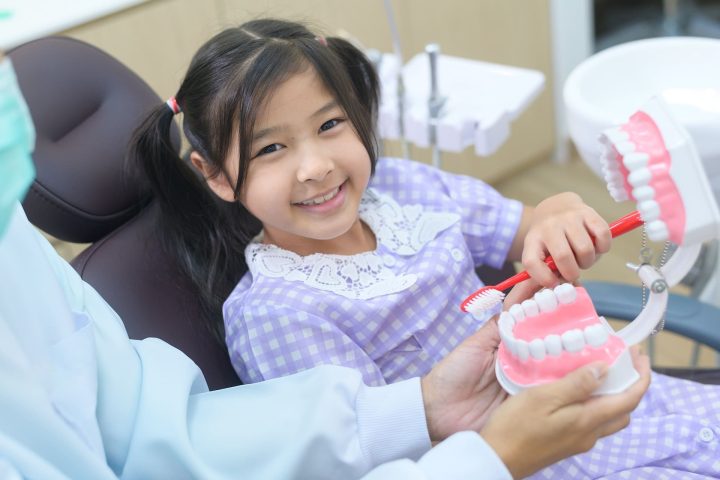When it comes to your child’s dental health, timely and comprehensive care is vital to ensuring their teeth remain healthy and functional. Dental pulp therapy, also referred to as “baby root canals” or “nerve treatments,” is one such procedure that may become necessary for your child. As part of our commitment to providing exceptional dental care for families in Newton, Massachusetts, Waban Dental Group – Pediatric Dentistry & Orthodontic remains dedicated to educating and assisting parents in understanding the importance of preserving their child’s oral health through treatments like pulp therapy.
Dental pulp therapy is a procedure performed on primary (baby) and young permanent teeth to treat infection or injury affecting the tooth’s dental pulp—the soft tissue found in the center of each tooth containing nerves, blood vessels, and connective tissues. Tooth decay, dental trauma, or other issues may cause injury to the pulp, resulting in infection, pain, and even abscesses if left untreated. Pulp therapy aims to save the affected tooth by removing the infected or injured tissue, thus preserving the tooth’s structure and function while preventing the spread of infection.
The two most common types of pulp therapy for children are pulpotomy and pulpectomy. Pulpotomy involves removing the affected dental pulp in the pulp chamber, then applying a medicated material to protect and preserve the remaining healthy tissue. Pulpectomy, on the other hand, entails removing the entire dental pulp—both in the chamber and root canals— followed by the application of a medicated filling material.
As a parent, understanding the need for pulp therapy and the benefits of these procedures can help you make informed decisions for your child’s dental health. In this comprehensive guide, we will discuss the various aspects of pulp therapy, including the conditions that may require it, the differences between pulpotomy and pulpectomy, and what to expect from the expert pediatric dental team at Waban Dental Group – Pediatric Dentistry & Orthodontic. Entrust your child’s dental care to our compassionate and proficient dentists, who prioritize the comfort and well-being of every young patient while offering the highest standard of care.
Indications for Pulp Therapy
Several factors might necessitate pulp therapy in children. Some of these conditions include:
1. Advanced tooth decay: When tooth decay reaches the dental pulp, bacteria can cause inflammation or infection, leading to pain and potential abscess formation.
2. Dental trauma: Injuries to the tooth, such as fractures or chips, can damage the dental pulp and lead to inflammation or infection.
3. Anomalies in tooth development: Certain developmental abnormalities may cause pulp exposure, increasing the risk of infection.
If your child experiences toothache, sensitivity, gum swelling, or a persistent pimple-like bump on their gums, consult with a dental professional to determine if pulp therapy is needed.
Pulpotomy vs. Pulpectomy: Choosing the Right Treatment
The choice between pulpotomy and pulpectomy depends on the extent of the damage to the dental pulp. Your pediatric dentist will determine the most suitable treatment based on a thorough examination of your child’s tooth.
1. Pulpotomy: This treatment is usually performed on primary teeth when the infection is confined to the pulp chamber. By removing affected tissue and applying medication, a pulpotomy can alleviate pain, preserve the remaining healthy dental pulp, and promote natural tooth function.
2. Pulpectomy: In cases of extensive pulp infection, a pulpectomy may be necessary to eliminate the entire dental pulp from both the pulp chamber and root canals. Once the infected tissue is removed, a pediatric dentist fills the empty chamber and root canals with a biocompatible material, then seals the tooth with a restoration.
The Pulp Therapy Procedure: What to Expect at Waban Dental Group – Pediatric Dentistry & Orthodontic
Our team at Waban Dental Group – Pediatric Dentistry & Orthodontic is dedicated to ensuring that your child receives the highest standard of care while prioritizing their comfort and well-being. During your child’s pulp therapy procedure, you can expect:
1. A thorough examination and X-rays: Our pediatric dentists will evaluate your child’s affected tooth and take necessary X-rays to determine the extent of damage, recommend the appropriate treatment, and create a personalized plan.
2. Anesthesia and pain management: To ensure your child’s comfort, local anesthesia will be used to numb the affected tooth and surrounding area. Sedation options are available as well to help alleviate anxiety.
3. Tooth restoration: Once the infected or damaged tissue has been removed and the tooth treated, a restoration such as a stainless steel crown or composite resin is placed to protect the tooth from further damage.
Post-treatment Care and Monitoring
After your child’s pulp therapy treatment, it’s essential to maintain proper oral hygiene to ensure the tooth’s continued health and function. Our pediatric dental team at Waban Dental Group – Pediatric Dentistry & Orthodontic will provide you with detailed post-treatment instructions and schedule follow-up appointments to monitor your child’s progress. Some post-treatment care suggestions include:
1. Encourage your child to keep their mouth clean by brushing and flossing regularly.
2. Offer a soft, easy-to-chew diet for the first few days after treatment.
3. Avoid sugary or acidic foods that can harm your child’s tooth enamel.
4. Schedule regular dental checkups for ongoing monitoring and preventive care.
Conclusion
Pulp therapy is a vital treatment option in pediatric dentistry that helps preserve the health and function of your child’s teeth. At Waban Dental Group – Pediatric Dentistry & Orthodontic, our compassionate and skilled team of dental professionals is dedicated to ensuring that your child receives exceptional care tailored to their specific needs. We prioritize the comfort of every young patient, making certain each dental experience is a positive one.
By understanding the importance of pulp therapy and entrusting your child’s dental pediatrics to Waban Dental Group – Pediatric Dentistry & Orthodontic, you can be confident that your child’s oral health is in the best hands. Schedule an appointment today to discuss potential pulp therapy treatment options and safeguard your child’s bright, healthy smile for years to come.









